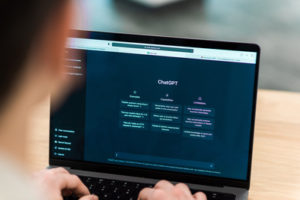Artificial Intelligence has become a game-changer in how businesses and individuals interact with technology. OpenAI’s GPT Builder allows you to create a customized version of ChatGPT tailored to your specific needs. Whether you’re building a chatbot for customer service, personal productivity, or a unique creative project, OpenAI’s GPT Builder simplifies the process of developing a specialized AI assistant.
Here’s a step-by-step guide to creating your own custom ChatGPT using OpenAI’s GPT Builder.
What Is OpenAI’s GPT Builder?
The GPT Builder is OpenAI’s tool for designing, training, and deploying custom versions of its GPT models. It enables users to customize behavior, fine-tune responses, and even integrate the chatbot into apps, websites, or business tools without requiring extensive technical expertise.
This means you can shape a chatbot to:
- Align with your brand’s tone and style.
- Respond to specific industry queries.
- Handle particular workflows or repetitive tasks.
Why Create a Custom ChatGPT?
There are numerous benefits to creating your own version of ChatGPT, such as:
- Personalization: Tailor responses to fit your unique goals.
- Efficiency: Streamline repetitive tasks or automate processes.
- Brand Alignment: Ensure your chatbot represents your brand voice.
- Enhanced Functionality: Add domain-specific knowledge or customized workflows.
Step-by-Step Guide to Creating Your Custom ChatGPT
1. Sign Up and Access GPT Builder
To start building your custom ChatGPT, you’ll need an OpenAI account. Sign in or create an account on OpenAI’s website. Once logged in, access the GPT Builder via the OpenAI platform.
2. Define the Purpose of Your Chatbot
Before diving into technical setup, clarify the purpose of your chatbot. Ask yourself:
- What problem will the chatbot solve?
- Who will be its primary users?
- What tone and personality should it have?
For example:
- A customer support bot should be empathetic and solution-oriented.
- A coding assistant should be concise and technical.
3. Set Up a New Custom GPT
In the GPT Builder, you’ll start by creating a new project. This involves:
- Naming your chatbot: Pick a clear, descriptive name.
- Describing its purpose: Provide a brief explanation of what your chatbot will do.
4. Fine-Tune the Model
To tailor the chatbot’s responses, OpenAI offers fine-tuning options. Fine-tuning involves training the GPT model with additional datasets or specific instructions.
- Provide examples of interactions: Use the “instruction-following” format to teach your chatbot how to respond to queries. For instance:
- User: How do I reset my password?
- Bot: To reset your password, click on “Forgot Password” on the login page and follow the instructions sent to your email.
- Add domain knowledge: If you want the chatbot to handle industry-specific queries (e.g., medical advice, legal terms), provide relevant datasets or FAQs.
5. Customize Personality and Tone
Using the GPT Builder, you can tweak the chatbot’s tone, vocabulary, and personality.
- Set parameters like formal/informal language, humor levels, or technical jargon.
- Create a personality profile: For example, “a friendly and approachable teacher” or “a formal and concise legal assistant.”
6. Test the Chatbot
Once your chatbot is customized, it’s time to test its functionality.
- Use the testing environment provided in GPT Builder to simulate conversations.
- Identify areas for improvement, such as inappropriate responses or unclear answers.
- Refine the training data based on test results.
7. Deploy the Chatbot
When your custom ChatGPT is ready, deploy it to the platform of your choice. OpenAI provides APIs for seamless integration into:
- Websites
- Mobile apps
- Business tools like Slack or Microsoft Teams
8. Monitor and Improve Performance
After deployment, monitor your chatbot’s performance. Collect feedback from users and use it to refine responses and improve the model. OpenAI’s dashboard provides usage statistics and analytics to help track effectiveness.
Best Practices for Building a Custom ChatGPT
- Start Simple: Begin with a basic setup and expand functionality as needed.
- Be Ethical: Ensure your chatbot aligns with OpenAI’s usage policies and avoids harmful or biased outputs.
- Optimize Responsiveness: Limit overly complex responses to keep interactions user-friendly.
- Provide Clear Instructions: During fine-tuning, give your model detailed examples for clarity.
Use Cases for a Custom ChatGPT
The possibilities are endless! Here are a few examples:
- Customer Support: Automate responses to common inquiries and direct complex cases to human agents.
- E-Learning: Create a tutor bot to assist students with questions in specific subjects.
- Productivity Assistant: Build a bot to help you schedule meetings, manage to-do lists, or generate reports.
- Creative Writing: Develop a bot to assist with story brainstorming, editing, or writing inspiration.
Conclusion
OpenAI’s GPT Builder is an incredibly versatile tool that allows you to create custom ChatGPT solutions tailored to your unique needs. By following this guide, you can develop a chatbot that aligns with your goals, enhances productivity, and delivers exceptional user experiences.
Start building today and harness the power of AI to make your projects or business more efficient, engaging, and innovative!
Feel free to reach out in the comments below if you have any questions or need help getting started with GPT Builder!









